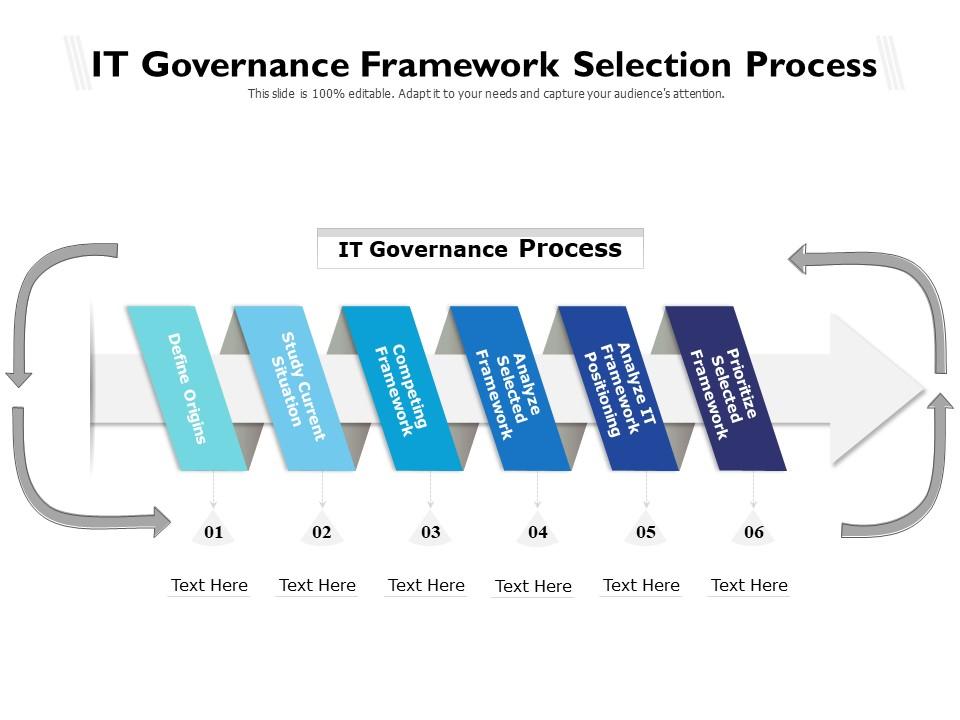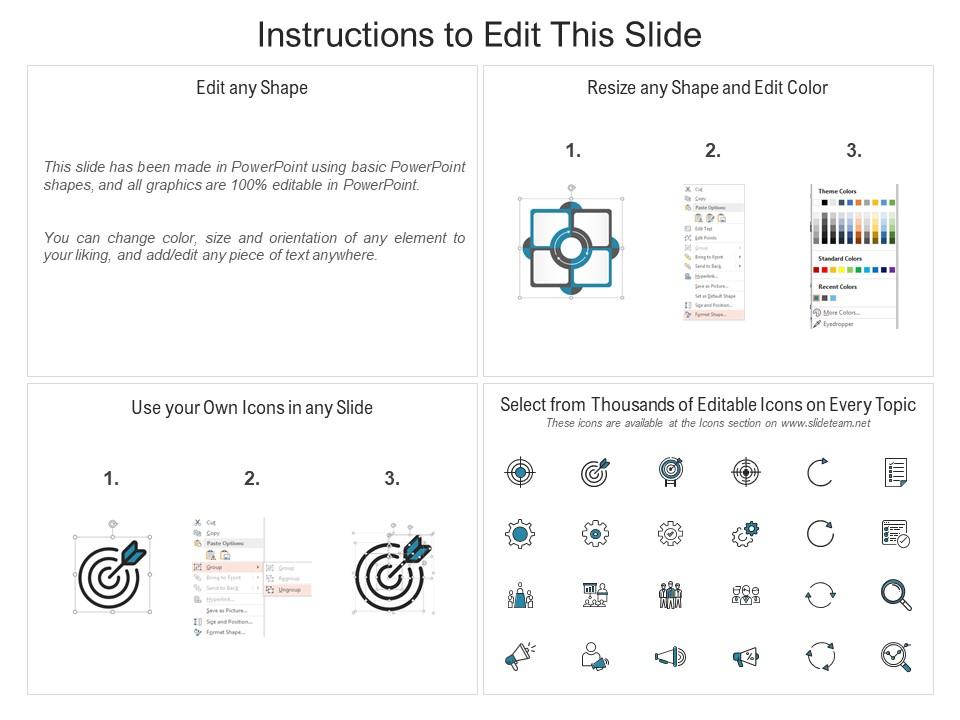It governance framework selection process
Handle your assets with our IT Governance Framework Selection Process. You will be delighted with the greater dividends.
- Google Slides is a new FREE Presentation software from Google.
- All our content is 100% compatible with Google Slides.
- Just download our designs, and upload them to Google Slides and they will work automatically.
- Amaze your audience with SlideTeam and Google Slides.
-
Want Changes to This PPT Slide? Check out our Presentation Design Services
- WideScreen Aspect ratio is becoming a very popular format. When you download this product, the downloaded ZIP will contain this product in both standard and widescreen format.
-

- Some older products that we have may only be in standard format, but they can easily be converted to widescreen.
- To do this, please open the SlideTeam product in Powerpoint, and go to
- Design ( On the top bar) -> Page Setup -> and select "On-screen Show (16:9)” in the drop down for "Slides Sized for".
- The slide or theme will change to widescreen, and all graphics will adjust automatically. You can similarly convert our content to any other desired screen aspect ratio.
Compatible With Google Slides

Get This In WideScreen
You must be logged in to download this presentation.
PowerPoint presentation slides
Presenting this set of slides with name IT Governance Framework Selection Process. This is a six stage process. The stages in this process are Define Origins, Study Current Situation, Competing Framework, Prioritize Selected Framework, Analyze Selected Framework. This is a completely editable PowerPoint presentation and is available for immediate download. Download now and impress your audience.
People who downloaded this PowerPoint presentation also viewed the following :
Content of this Powerpoint Presentation
Description:
The provided image illustrates a comprehensive step-by-step process within an IT Governance Framework Selection methodology. This methodology guides organizations through the critical stages of choosing an appropriate governance framework tailored to their IT operations. The process is thoughtfully laid out in six distinct steps, each with its own purpose and significance:
1. Define Origins:
Objective: At the outset, the organization establishes the foundational reasons for seeking an IT governance framework. This may involve identifying business objectives, compliance requirements, or specific IT departmental needs.
Actions: Initiating the process by identifying the driving forces behind the need for an IT governance framework.
Importance: Sets the context and rationale for embarking on the governance framework selection journey.
2. Study Current Situation:
Objective: This phase involves a comprehensive assessment of the organization's existing IT governance landscape.
Actions: The organization thoroughly reviews its current policies, processes, and performance to gain a clear understanding of areas requiring improvement or modification.
Importance: Provides valuable insights into the current state, enabling identification of gaps and opportunities for enhancement.
3. Compile Competing Framework:
Objective: This step entails gathering information about various available IT governance frameworks.
Actions: Research efforts focus on identifying potential frameworks that align with the organization's unique requirements and objectives.
Importance: Expands the knowledge base and options available, facilitating an informed decision-making process.
4. Analyze & Frame IT Framework:
Objective: At this stage, the organization conducts a detailed analysis of shortlisted governance frameworks.
Actions: Critical evaluation factors include compatibility with existing systems, cost of implementation, and alignment with overarching business goals.
Importance: Ensures a thorough understanding of the practicality and benefits of each framework, aiding in the decision-making process.
5. Analyze IT Framework Positioning:
Objective: Organizations assess how each framework might position them within their industry or market.
Actions: Evaluation criteria extend to competitive advantages and alignment with future IT strategies and organizational goals.
Importance: Helps select a framework that enhances market positioning and supports long-term strategic objectives.
6. Prioritize & Select IT Framework:
Objective: The final step involves prioritizing the shortlisted frameworks and making a definitive selection for implementation.
Actions: Prioritization is based on the analyses conducted in earlier steps, ensuring alignment with the organization's unique needs.
Importance: Concludes the selection process with a clear choice that best suits the organization's objectives and requirements.
Use Cases:
This comprehensive IT Governance Framework Selection methodology slide finds relevance and application across diverse industries, each with distinct needs and objectives:
1. Financial Services:
Use: To standardize IT governance in compliance with financial regulations.
Presenter: Chief Information Officer (CIO).
Audience: Board of Directors.
2. Healthcare:
Use: To ensure patient data security and compliance with healthcare standards.
Presenter: IT Governance Officer.
Audience: Compliance and Risk Management Teams.
3. Manufacturing:
Use: To streamline IT operations for production systems and supply chain management.
Presenter: IT Operations Manager.
Audience: Operation Directors and Production Managers.
4. Retail:
Use: To manage IT governance for e-commerce platforms and digital customer experiences.
Presenter: E-commerce Strategy Director.
Audience: Marketing and IT Departments.
5. Education:
Use: To align IT governance with educational technology initiatives and data privacy.
Presenter: Director of Educational Technology.
Audience: Administrative Leadership Team.
6. Government:
Use: To adopt IT governance frameworks meeting public sector requirements and policies.
Presenter: Chief Technology Officer (CTO).
Audience: Policy Makers and Government IT Personnel.
7. Telecommunications:
Use: To orchestrate IT governance ensuring network security and service quality.
Presenter: Network Operations Head.
Audience: Corporate Security Team and Network Engineers.
It governance framework selection process with all 2 slides:
Handle your business with our IT Governance Framework Selection Process. Build up an aura around your brand.
No Reviews











